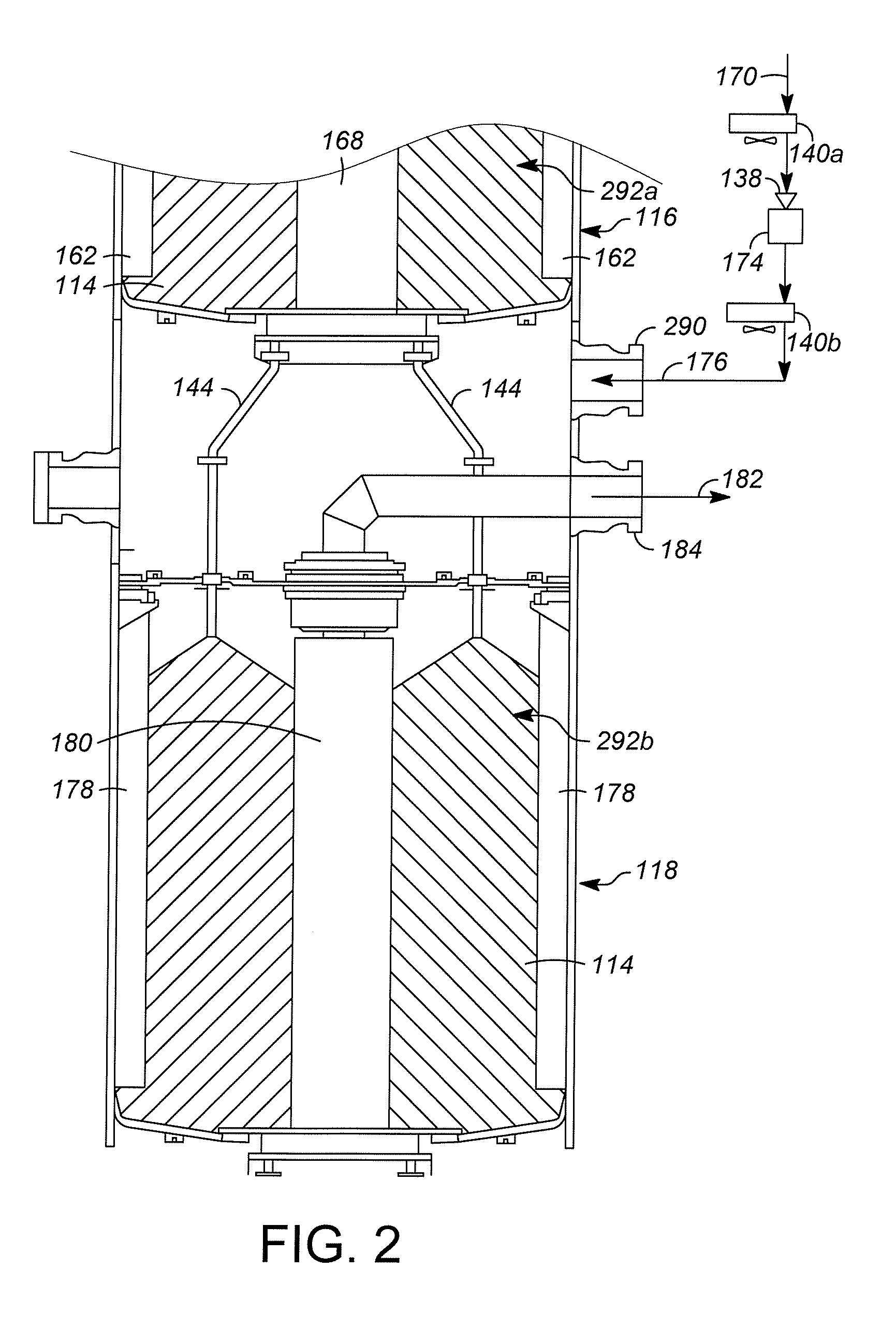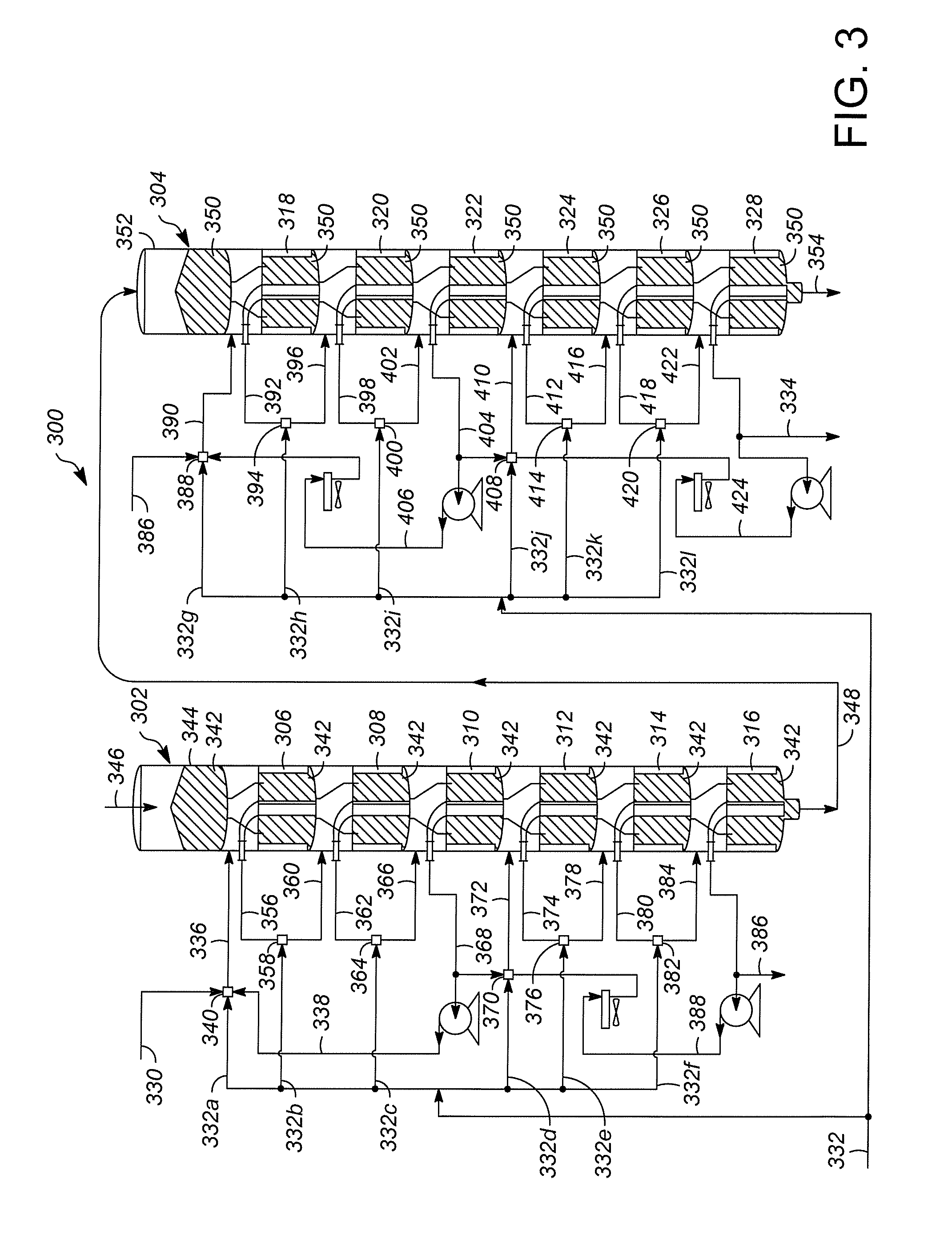Solid catalyst hydrocarbon conversion process using stacked moving bed reactors
a technology of solid catalyst and moving bed reactor, which is applied in the direction of hydrocarbon oil cracking, catalytic naphtha reforming, organic chemistry, etc., can solve the problems of increasing the capital and operating costs of the process, requiring frequent regeneration, and relatively quick deactivation times of solid alkylation catalysts
- Summary
- Abstract
- Description
- Claims
- Application Information
AI Technical Summary
Benefits of technology
Problems solved by technology
Method used
Image
Examples
Embodiment Construction
[0028]FIG. 1 illustrates one example of a hydrocarbon conversion system, illustrated generally at 100. Hydrocarbon conversion system 100 is a solid catalyst hydrocarbon conversion process operated in the liquid phase. Hydrocarbon conversion processes are well known in the art and include processes such as cracking, hydrocracking, alkylation of aromatics, alkylation of isoparaffins, isomerization, polymerization, reforming, dewaxing, hydrogenation, dehydrogenation, transalkylation, dealkylation, hydration, dehydration, hydrotreating, hydrodenitrogenation, hydrodesulfurization, and ring opening processes. Many of these processes are known to be successful when operated in the liquid phase mode.
[0029]An example of one class of liquid phase hydrocarbon conversion processes is olefin alkylation. In such an alkylation process, isobutene reacts with an acid site to form a tertiary carbenium ion (tC4+). The tC4+ ion reacts with an olefin molecule (C4═) to form a larger tertiary carbenium io...
PUM
 Login to View More
Login to View More Abstract
Description
Claims
Application Information
 Login to View More
Login to View More - R&D
- Intellectual Property
- Life Sciences
- Materials
- Tech Scout
- Unparalleled Data Quality
- Higher Quality Content
- 60% Fewer Hallucinations
Browse by: Latest US Patents, China's latest patents, Technical Efficacy Thesaurus, Application Domain, Technology Topic, Popular Technical Reports.
© 2025 PatSnap. All rights reserved.Legal|Privacy policy|Modern Slavery Act Transparency Statement|Sitemap|About US| Contact US: help@patsnap.com



